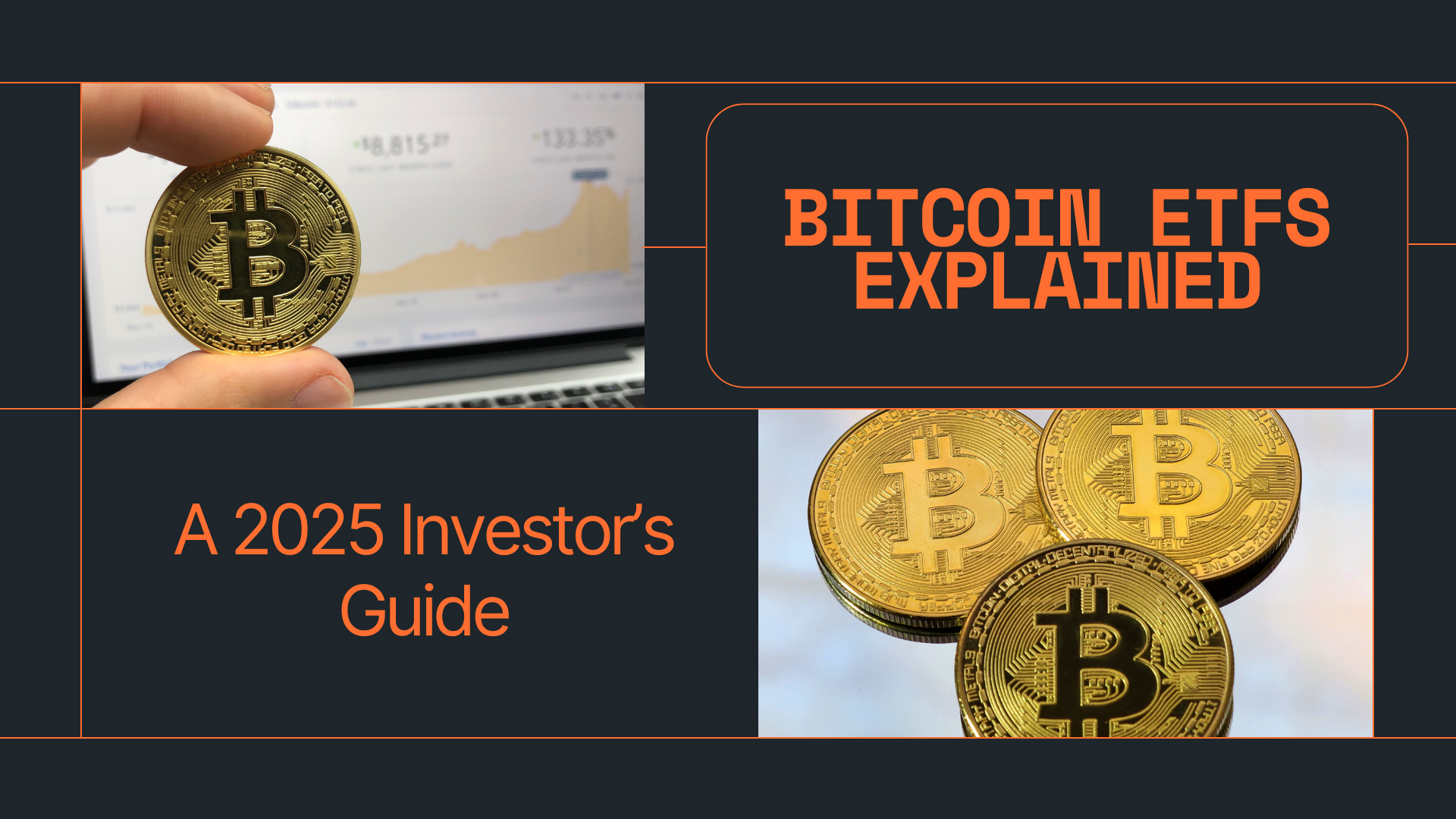
Exchange-traded funds have been around since 1993, but it took three decades-and dozens of denied applications—before U.S. regulators finally approved a spot Bitcoin ETF in January 2024. Now, just 18 months later, these products have attracted more than US $9 billion in net inflows, according to Bloomberg data, and frequently trade more volume than the largest gold funds. This guide distils what investors need to know in 2025: how Bitcoin ETFs work, why they matter, and the risks that still lurk beneath the ticker symbols.
What is a Bitcoin ETF?
A Bitcoin ETF is an exchange-traded fund designed to mirror the price of bitcoin while letting investors buy shares through a regular brokerage account. There are two main flavours:
- Spot Bitcoin ETFs – The fund holds actual BTC in cold storage and issues shares backed 1-for-1 by coins.
- Futures-based Bitcoin ETFs – The fund buys Chicago Mercantile Exchange (CME) bitcoin futures contracts instead of physical coins.
Spot products track the underlying asset more tightly and avoid the “contango bleed” that can hit futures funds over time. They also dominate 2025 inflows after the U.S. Securities and Exchange Commission approved 11 spot offerings in one landmark decision.
Key milestones on the road to approval
| Year | Event | Comment |
| 2013 | First Winklevoss filing | Rejected for market-manipulation concerns |
| 2021 | ProShares launches futures ETF | Opens the door within derivatives framework |
| Jan 2024 | SEC green-lights 11 spot ETFs | Rule change hinges on shared surveillance with CME |
| 2024–25 | Net inflows exceed US $9 billion | BlackRock’s iShares IBIT leads asset gathering |
The breakthrough came after a Federal appeals-court win by Grayscale forced the SEC to revisit its logic on spot versus futures pricing. Once surveillance-sharing agreements were in place, Chair Gary Gensler said the agency could “best protect investors” by approving a broad cohort rather than one issuer.
How a spot Bitcoin ETF works
- Primary creation – An authorised participant delivers cash to the trust sponsor.
- Coin purchase – The sponsor buys bitcoin on an approved exchange and transfers it to a qualified cold-storage custodian.
- Share issuance – Creation baskets are split into ETF shares and deposited into the participant’s brokerage account.
- Redemption – The process reverses when the participant returns shares and receives bitcoin or cash.
This creation-redemption loop keeps the share price close to net-asset value (NAV) by incentivising arbitrage whenever premiums or discounts arise.
Pros and cons of investing via ETF
| Advantage | Detail |
| No private keys | Eliminates self-custody risk and seed-phrase loss. |
| Tax efficiency | In many jurisdictions, in-kind creations don’t create capital-gains events. |
| Regulated wrapper | U.S. funds file daily holdings and audited statements. |
| Ease of access | Buy through any IRA or brokerage account; margin eligible. |
| Risk | Detail |
| Fee drag | Total expense ratios range 0.19 %–1.50 %. |
| Custody concentration | Most issuers rely on a handful of crypto custodians. |
| Premium/discount gap | NAV slippage can widen in fast markets (though generally tighter than OTC trusts). |
| Regulatory overhang | Congress could still impose new reserve or collateral rules. |
2025 performance snapshot
- Assets under management: Crypto funds hit a record in June 2025 as institutional buyers diversified beyond gold and equities.
- Institutional rotation: Hedge-fund filings show dynamic reallocations—Millennium cut its IBIT stake yet boosted ARK 21Shares holdings, illustrating active arbitrage among issuers.
- Trading volume: One-year anniversary studies by VettaFi note that spot bitcoin ETFs now account for ~6 % of total U.S. ETF turnover.
How to buy a Bitcoin ETF in 2025
- Select a broker — Most major U.S. and EU platforms list spot ETFs; check commission schedules.
- Compare fees — For long-term positions, 20 basis-point savings can outweigh short-term premium differences.
- Review liquidity — IBIT and FBTC routinely trade millions of shares daily; smaller funds may carry wider spreads.
- Evaluate cold-storage policy — Coinbase Custody remains the dominant vault provider, but some issuers diversify among custodians.
- Monitor tax treatment — U.K. holders face capital-gains tax; U.S. investors receive 1099-B forms just like equity ETFs.
Bitcoin ETF versus direct ownership
| Metric | ETF | Self-Custody Bitcoin |
| Security | Institutional-grade cold storage | User responsible for keys |
| Fees | 0.19 %–1.5 % TER | 0 % holding cost; network fees on transfers |
| Trading hours | Exchange hours | 24/7 global market |
| Collateral use | Marginable, options overlay possible | Limited to DeFi lending (counter-party risk) |
| Privacy | Broker KYC required | Pseudonymous, unless exchange-purchased |
Global landscape
- Canada – Purpose Bitcoin ETF (BTCC) launched 2021; remains a multi-billion-dollar product.
- Europe – Germany’s Xetra lists ETC Group’s BTCE; Ireland domiciles multiple UCITS-eligible ETPs.
- Asia – Hong Kong approved dual BTC and ETH spot ETFs in April 2024, attracting cross-border flows from mainland brokers.
- Latin America – Brazil’s QBTC11 trades on B3, giving pension funds regulated exposure.
As more jurisdictions add spot products, competition pressures fees and improves secondary liquidity, benefiting global investors.
Conclusion
Spot Bitcoin ETFs have transformed digital-asset investing by fusing crypto exposure with the familiar plumbing of traditional markets. They eliminate private-key headaches, deliver institutional-grade custody, and slot seamlessly into retirement portfolios. Yet they are not a panacea: fees, regulatory shifts, and custody concentration still warrant close scrutiny. As 2025 unfolds, the products’ success will hinge on continued inflows, tight NAV tracking, and transparent governance. For investors comfortable with those variables, a Bitcoin ETF offers one of the simplest, most regulated avenues for accessing the world’s best-known cryptocurrency—no wallet required.